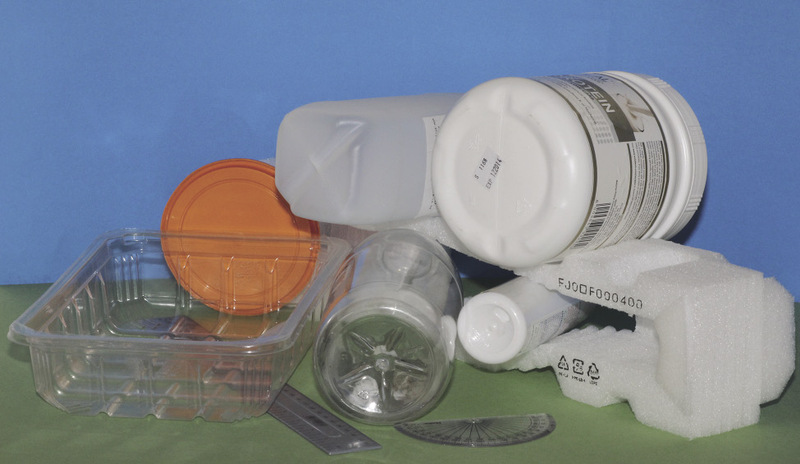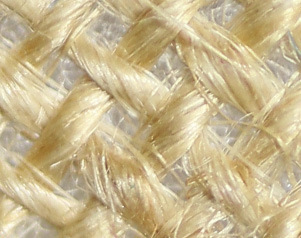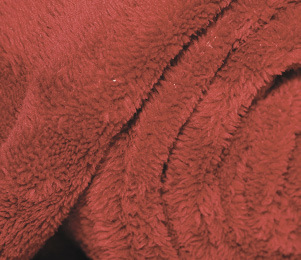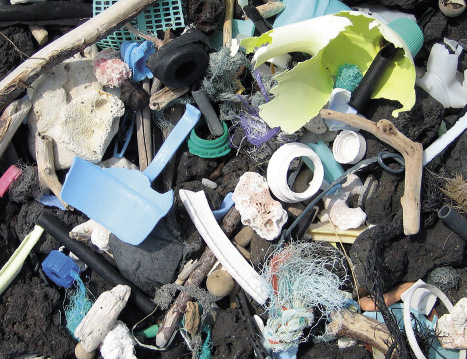Plastics
In this chapter, you will learn about the various types of plastic. You will also learn that plastic can be recycled, and why this is important.
Note to the teacher:
Learners should bring plastic products and containers to school for this week's activities. Figure 1 below suggests a few types of plastic products they can bring.
It is important that learners bring a wide variety of plastic products. They have to bring plastic products with recycling codes at the bottom to identify which type of plastic it was made of.
The selection should include clear, translucent and opaque types of plastic, and hard and soft types of plastic. A few examples of what they can bring are cool drink bottles, milk bottles, peanut butter jars, shampoo bottles, polystyrene cups, margarine tubs, plastic plates, plastic eating utensils, freezer bags, flip-flops (plastic sandals), combs, lunch boxes, and/or geometry triangles.

What are plastics, and what properties do they have?
Up to about 100 years ago, most clothes as well as many tools and appliances were made of plant or animal materials, such as cotton, wool, wood, animal skin, and bird feathers. But then chemistry scientists invented ways to make synthetic materials with similar properties to natural materials, and sometimes with useful properties that no natural materials have. Most of these synthetic materials are made from mineral oil, and most of them are called plastics. Synthetic materials are usually cheaper and lighter than natural materials with the same properties, and factories can mould the synthetic materials into unique shapes.
When you look at a piece of cloth closely you will see that it is woven from many thin threads, like very thin pieces of rope. If you use a microscope to look even closer, you will see that each thread is made of different long, thin pieces that hook or twist into one another. These long and very thin pieces are called fibres. In the close-up photo below you can see the plant fibres from which a specific fabric is made.
Rulers were once made from wood, but are now made from plastic. Buckets were first made from wood, then from galvanised steel, but now they are made from plastic as well. Milk came in heavy glass bottles or steel cans, but now comes in plastic bottles. Ropes were twisted from sisal plant fibres, but most ropes are now made from plastic fibres. Cars were made mostly from steel, wood and leather, but now many parts are made from plastics.

All around you, there are objects made of different types of plastic. Look at your shoe soles, your pen and ruler. In winter you may wear a fleecy jacket that feels like wool. That woolly substance is actually made of plastic fibres. Many clothes and most carpets are made from plastic fibres.
There are also disadvantages to synthetic materials. You learnt in Grade 8, Term 3, Chapter 8 that most plastics do no bio-degrade as natural materials do. This means plastic waste lasts a very long time.

Plastics are examples of polymers. A polymer is a material that is made from molecules that have carbon atoms, hydrogen atoms and other atoms joined in long chains. Cotton, wool, leather, hair, starch, wood and rubber are examples of natural polymers. The molecule chains join together in different ways, so that there are many different kinds of polymers with different properties.
Plastics are man-made (synthetic) polymers. They are most often made from mineral oil, because the molecules in this oil are chains of carbon atoms, but shorter chains than in plastics.
The word plastic was originally used to describe a property that materials such as rubber have, namely that they can be given a new shape. Most synthetic polymers have this property, and therefore they were given the name "plastics".
Molecules are made of atoms that join together. You know from Natural Sciences that molecules are much too small to see, even with a microscope.
Different properties of plastics
Depending on the type of plastic and the form in which it is made, it may have a few of the following properties:
- Transparent means you can see clearly through the plastic.
- Translucent means light can shine through the plastic even though you can't see through it.
- Tough means the plastic will not break or shatter if you hit it or drop it.
- Elastic means you can stretch the plastic far and it will still return to its original shape.
- Flexible means the plastic can bend without breaking.
- Rigid means the plastic will resist bending and stretching, but if you apply a big enough force to bend or stretch it, it will break or even shatter.
- Heat-resistant means the plastic will not melt easily.
- Fire-resistant means the plastic will not burn easily.
- Waterproof means water will not pass through the plastic.
- Foamed means the plastic has been processed to fill it with small air bubbles.
- Electrically insulated means the plastic does not allow electricity to conduct through it.
- Thermally insulated means the plastic does not allow heat to be conducted through it easily.
In many of these cases, you cannot simply say the plastic has a specific property or does not have a specific property. For example, you cannot simply say a type of plastic is flexible. You need to say how flexible it is, for example very flexible or only slightly flexible.
Investigate properties of plastic objects
Work in teams of three or four.
For this activity, your teacher asked you to bring different plastic objects to school.
Each team should take two of the objects and describe their properties. Write the name of the object and then write its properties next to it.
1. Object 1:
2. Object 2:
Now swop your two plastic objects with the those of another team that have different objects. Then write down the names and properties of the other team's objects.
3. Object 3:
4. Object 4:
Types of plastic, recycling, and identification codes
Thermoplastic and thermosetting plastics
Some plastics are soft or similar to liquid, until you heat them in a specific way, or mix another chemical with them. Then they "set" or become hard and rigid. After they set, you cannot make them soft again by heating them. So you cannot shape them into new products. They will burn, but not turn soft again. Plastic such as this is called thermosetting plastic.
Examples are epoxy-resin glue, shoe soles, car tyres, electrical plugs, pot handles, electronic circuit boards, and kitchen worktops. Thermosetting plastics cannot be recycled by simply reheating them. They can, however, be turned back into oil through a high-temperature chemical process called "pyrolysis".
Safety warning:
Wear protective heat-resistant gloves, protective glasses and fire-resistant clothing if you try to melt plastic, since molten plastic can splatter and cause serious burn injuries.
Never try to melt plastic by using a flame, since the plastic can start to burn, and it can release poisonous gases.
Other plastics melt when they are heated, and can then be shaped into new products. These are called thermoplastic plastic. Cool drink bottles and detergent bottles are thermoplastic. If you pour boiling water into it you can change the shapes.
Why we have to recycle plastic
Waste plastic in the environment is a big problem. Most types of plastic will not bio-degrade, but will last for hundreds of years.
Landfills are usually near cities so that garbage trucks don't have to travel too far to dump the waste. But that means people can never build houses on that land or grow crops on it.
Any materials that go into a landfill will never be used again. Instead, people will need to extract more raw materials such as oil, coal, steel, wood or glass from the earth. Then they will burn more coal to generate electricity in order to process the raw materials.
Not all plastics go into landfills, though. A lot of plastic just remains where someone has tossed it, or is dumped into rivers and then goes into the ocean.

In some parts of the ocean, wind causes the water to flow round and round in one place. These areas are much bigger than South Africa. They are called "ocean gyres". Here, millions of floating plastic bottles, bags and little plastic flakes about the size of this block ☐ gather.
Turtles mistake the plastic bags for jelly-fish and swallow them, which kills them. Large and small fish swallow the small plastic flakes. Sea-birds eat these fish and the plastic in the fish kills the sea-birds.
So plastic being dumped in the environment is a big problem. But many types of plastic can be recycled.
To recycle means to process waste materials to make new products from it.
1. Write down two reasons why we should recycle plastic items.
Different types of plastic need different processes to recycle it
Waste of different types of plastic need to be sorted so that each type of plastic can be recycled separately. Manufacturers have agreed on a set of codes to show which type of plastic a product is made of.
|
Codes and names |
Examples of products |
Properties |
Recycled products |
|
polyester |
cool drink bottles |
clear; tough; good barrier for liquids and gases; heat-resistant |
fibres to make fabrics for clothes, bags and carpets; food and drink containers |
|
high density polyethylene |
bottles for milk, juice, water and laundry products |
somewhat rigid; tough; resistant to chemicals; good barrier for liquids and gases |
bottles; pipes; buckets; crates; flower pots; bins; plastic planks; floor tiles |
|
polyvinyl chloride |
pipes; coating (sheaves) of electrical wires |
resistant to chemicals; electrically insulating; tough; can be rigid or flexible |
gutters; floor tiles and mats; electrical boxes; garden hoses |
|
low density polyethylene |
thin plastic films, for example to cover food or books; flexible lids and bottles |
flexible; tough; good for sealing; barrier to moisture |
garbage bags; floor tiles; bins |
|
polypropylene |
large moulded parts, for example car parts |
resistant to chemicals; tough; heat-resistant; barrier to moisture |
car battery cases; brooms and brushes; bins; trays |
|
polystyrene |
protective packaging; disposable cups; bottles; trays; thermal insulation (especially in roofs) |
can be rigid or foamed; low melting point; in foamed form it is an excellent heat insulator |
plates for light switches; rulers; thermal insulation; foam packaging |
|
other type of plastic, or more than one type of plastic used in the same product |
acrylic or perspex sheets (can be used as a replacement for glass windows); "ABS" for making car bumpers |
depends on the type of plastic; "ABS" has very good shock-absorbing properties |
plastic planks |
What have you learnt?
Identify the types of plastic on the table
Look at the four plastic products your team looked at in the activity in section 9.1 again. Turn them upside down and try to find a symbol for the recycling code.
1. Complete the table below:
|
Code and name of the type of plastic |
Properties |
What products could be made from this recycled material? |
|
|
Object 1 |
|||
|
Object 2 |
|||
|
Object 3 |
|||
|
Object 4 |
2. Why do manufacturers often choose to make their products from plastic?
3. Why do manufacturers put recycling codes on the bottom of containers?
4. Why do they not use the same type of plastic for everything that can be manufactured?
5. Think of three objects that could not be made of plastic.
Next week
In the next chapter, you will learn how plastics are recycled to make new products.










